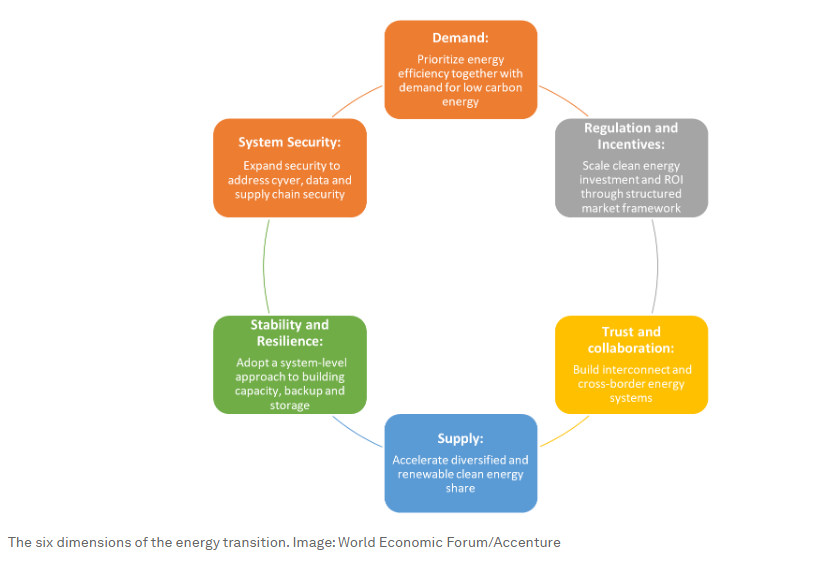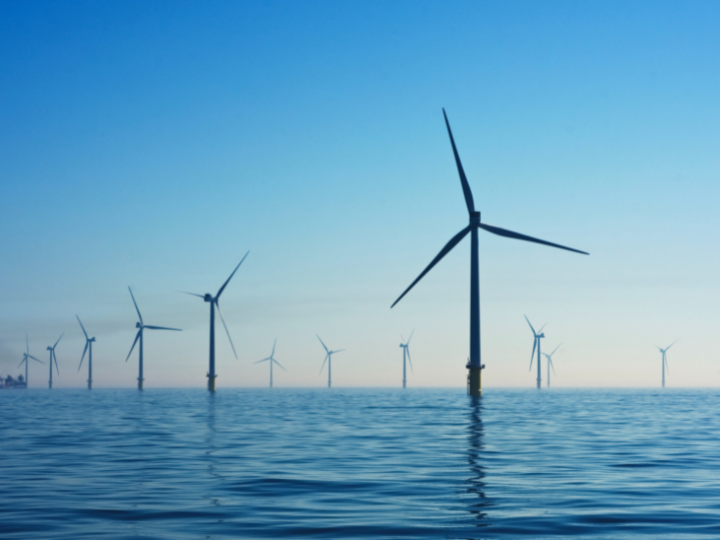by Muqsit Ashraf and Roberto Bocca*
“How can the energy transition and energy security be advanced in parallel?” That is the key question facing energy leaders today. The answer lies in seeing these not as competing imperatives, but complementary. Sustainability and security must be core characteristics of the future energy system. The world cannot achieve energy transition without integrated solutions that address both simultaneously.
While sustainability continues to be top of mind for leaders, the real emphasis now is on strengthening energy systems. Many are concerned that a de-emphasis on sustainability may threaten the momentum to net zero. But that’s not a foregone conclusion.
To meet short-term security needs, some governments have begun to roll back green policies to ensure the stability of their energy supply chains. Actions to reinforce supplies of natural gas have included securing alternate sources, building new gas infrastructure to receive LNG (liquefied natural gas) cargos, and increasing the share of coal in the power mix.
These responses may lock a region into a fossil fuel commitment and seemingly displace investments in clean energy solutions in the short term. But the energy crisis will also serve as a catalyst to accelerate momentum toward a secure, clean energy-led future. Short-term pain will yield medium- and long-term gains, which is evident from a number of policy packages, such as the US Inflation Reduction Act and RePower EU, which bring clean energy pathways to the foreground amid the ongoing energy crisis.
The energy security challenges we face today are not those of the past. Some of the conventional solutions (geopolitics, resource storage) miss addressing them in totality, while others (productivity, consumption, efficiency, and regulations) are valid yet require adjustments. New approaches are needed to deal with digitally connected energy assets and systems, extended supply chains and emerging technologies at scale.
The World Economic Forum, in collaboration with Accenture, proposes a comprehensive framework that highlights how connected actions across six dimensions can address these security challenges and ensure the security of the energy transition.

1. Demand
Harnessing the value of demand for low-carbon energy can improve system flexibility and reliability, energy security and resiliency, and reward consumers. A just transition requires society to prioritize energy efficiency. Enhancing efficiency offers immediate cost savings that can be reinvested in the clean energy system. It can also have a significant, instant impact on emissions. Importantly, efficiency imperatives can be extended beyond energy to include efficient utilization of materials such as steel, copper and cement necessary to develop the low-carbon energy infrastructure.
Promoting new operating practices, incentives and behavioural changes can yield energy savings of ~110 EJ by 2030, equivalent to more than 18% of global energy consumption in 2021. This highlights the critical role played by the much-overlooked demand-side management in adding value to the energy system.
2. Regulation and incentives
Investments needed to keep the energy transition on track could exceed $4 trillion by 2030. Decisions about where to allocate funding must take three trade-offs into account: a) near-term action vs. long-term development of the future energy system; b) the provision of energy affordability and access vs. the scaling of low-carbon solutions; and c) the assurance that investments will be sustained for the lifetime of the assets vs. a focus on maintaining agility and continually enhancing the energy framework. In the coming decade, investment and market structures will play a critical role in guiding public sector actions and directing investments in carbon capture, utilization and storage (CCUS), H2, biofuels and zero emission power assets needed for the future.
Balancing energy security and sustainability will require significant public-private commitments, policy mechanisms, and structured frameworks that support consumers and enable the ongoing development of clean energy infrastructures.
3. Trust and collaboration
More than 100 countries have proposed (or are considering) a net zero target. For many, full decarbonization will include actions that extend beyond national borders, such as sharing infrastructure or building multinational market mechanisms. The success of such initiatives – whether to enhance power system connectivity or develop connected supply chains – will depend on the effective sharing of technologies, resources and knowledge. Collaboration and trust among all parties are key.
Energy security and sustainability are global imperatives, demanding a global response. Regional/national coordination, public-private collaborations, and interconnected, cross-border energy systems must be strategically developed, more so over the next decade. Trust among parties will be a key transition success factor and must, therefore, be prioritized.
4. Supply
Fossil fuels account for more than 80% of global energy consumption. While fossil-based resources are geologically pre-set, countries can achieve supply security and even self-sufficiency through a combination of energy trading and fuel source diversification. Additionally, supply security must extend beyond energy sources to also address the supply of minerals used to develop connected grids and transmission infrastructures, which will be critical for the deployment of intermittent renewables at scale.
The energy transition won’t happen without a diversified energy supply and a steadily growing share of clean and renewable energy assets. Every $1 spent on new fossil fuel production and infrastructure should be augmented with $5 devoted to developing renewable energy capacity.
5. Stability and resilience
Clean electricity is critical to delivering energy security while advancing the transition. However, introducing more wind and solar can impact grid reliability. Grid modernization, along with enhanced energy storage and backup generation capabilities, will be needed to accommodate dispatchable alternatives to current energy sources. Reimagined operations, circular supply chains, improved stakeholder communications and optimized workforce management practices are also critical to ensuring a strong and resilient grid.
The future of energy is decentralized, digitalized and collaborative – and runs on smart grids that are reactive and flexible, hence key to integrating renewables effectively into our energy supply. Building a stable and resilient energy system extends beyond network capacity, backup and storage to include new ways of collaborative engagements within the technology sector – not just with energy suppliers.
6. System security
Smart and digitized energy assets offer many benefits, but they are vulnerable to new forms of attack. The energy sector accounts for 16% of all detected cyberattacks, a number that has only increased alongside the recent pandemic. Collectively, the energy sector is the third most targeted industry by cybercriminals. In response to this elevated threat level, improvements in emergency response, incident reporting and system design are needed.
In a world of growing physical and cyber threats, leaders need to reset their security focus and work collaboratively – from securing energy supplies to securing data and the extended supply chain. A robust physical and cybersecurity culture is critical to the energy industry’s security and resilience.
Energy security is a core component of a successful energy transition. But it can no longer be considered a standalone concern. Nor can it be distinguished from the need for energy sustainability. In fact, these issues are so intertwined that it is not hyperbolic to conclude that the future of energy security is energy sustainability. Focusing on these six interconnected areas of action can help drive improvements in security and sustainability – and pave the way to a smoother and more successful transition.
*Global Lead, Accenture Strategy and Head of Shaping the Future of Energy and Materials; Member of the Executive Committee, World Economic Forum
**first published in: Weforum.org




 By: N. Peter Kramer
By: N. Peter Kramer
